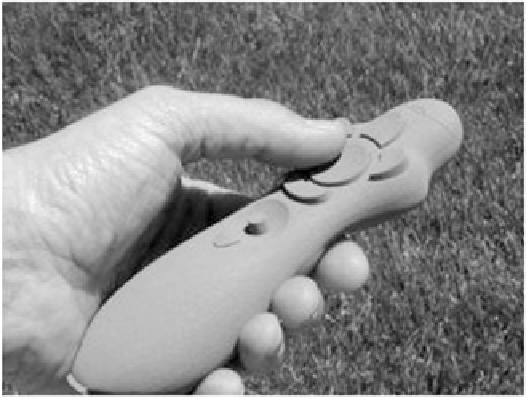Database Reference
In-Depth Information
Figure 15.5:
Foam models allowed the team to experiment with different button layouts.
Looking Forward, Looking Back
As of this writing, the microphone is still under development. The mechanical and electrical engineers
are working on the PC board and suggesting modifications that will make manufacturing easier. Bob is
working with the mechanical engineer to create a CAD database so that they can do the tooling for
manufacturing. The model maker is creating a new button-array insert with greater tactile feedback
between the buttons. I also plan to conduct usability tests, using the most realistic model that's
available at the time.
Although all this prototyping may sound like a significant effort, any design mistake that made it into
production would be very expensive due to manufacturing costs. David Pearah, Dictaphone's Senior
Product Line Manager, Speech Products, sums it up:
"The benefits of going through the prototyping steps are almost too obvious to mention. The
design exercise with wood blocks gave us a good forum for discussing our ideas. The drawings,
Fome-Cor models, and foam models each improved our understanding of the designs that Bob
and Hal were creating.
We are building something that physicians will hold all day long. Without a 3D model, there's no
way to know how comfortable it will be. Designing the microphone was more complex than we
thought it would be because curvature, button spacing, and tactile feedback all make a difference
in the user experience. We needed multiple models to discover the subtle things. It's important to
know when to stop making prototypes though; at some point you have to actually make the thing.
It can never be 100% perfect. There are long cycles in hardware development and foam models
are the cost of reducing risk. Although it increases time up front, it can save time later on. The
process Hal describes worked well for us."










Search WWH ::

Custom Search